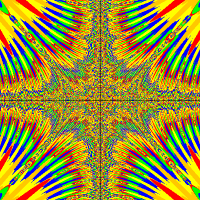I am about to do a project "Conway's game of life".
This codes are from an existing scenerio of "Conway's game of life" at this website. I am gonna mention the codes of World class of this scenerio (http://www.greenfoot.org/scenarios/1336)
Now I need to understand:
1. Why "saveLastState" is used and what does it do?
2. Explain the parameter here. Specially what does( i, 0, i, endY) do?
myGrid.drawLine(i, 0, i, endY);
3. Explain the parameter here. Specially what does (0, i, endX, i) do?
myGrid.drawLine(0, i, endX, i);
4. Explain the part:
Cell c = new GameOfLifeCell(myCellSize);
myCells = c;
setInitCellState(c);
addObject(c, i, j);
*Why GameOfLifeCell is used? & *what does "addObject(c, i, j);" do?
* What does setInitCellState method do?
5. Why the getRandomNumber(4) is used and what "c.setState(true);" does?
import greenfoot.*; // (World, Actor, GreenfootImage, Greenfoot and MouseInfo)
import java.awt.Color;
/**
* The Grid consists of the lines and cells of the CA.
*
* @David Brown
* @03/16/2010
*/
public class CellularAutomata extends World
{
private GreenfootImage myGrid;
private Cell[][] myCells;
private int myWidth, myHeight, myCellSize;
/**
* Constructor for objects of class Grid. Calls methods to draw the
* grid lines, to create the array of cells and to place 23
* Fibonacci ants onto the grid.
*
*/
public CellularAutomata()
{
super(50, 50, 10);
myHeight = getHeight();
myWidth = getWidth();
myCellSize = getCellSize();
drawGrid();
createCells();
}
/**
* Tell each cell to save its last state in preparation for the
* next time step.
*/
public void act()
{
for(int i = 0; i < myHeight; i++)
for(int j = 0; j < myWidth; j++)
myCells[i][j].saveLastState();
}
/**
* Draw the lines of the cell grid.
*/
private void drawGrid() {
myGrid = getBackground();
myGrid.setColor(Color.red);
int endY = myCellSize * myHeight;
int endX = myCellSize * myWidth;
for (int i = 0; i < endX; i += myCellSize)
myGrid.drawLine(i, 0, i, endY);
for (int i = 0; i < endY; i += myCellSize)
myGrid.drawLine(0, i, endX, i);
}
/**
* Create the array of cells and turn some of them on.
*/
private void createCells() {
myCells = new Cell[myHeight][myWidth];
for (int i = 0; i < myHeight; i++)
for (int j = 0; j < myWidth; j++) {
Cell c = new GameOfLifeCell(myCellSize);
myCells[i][j] = c;
setInitCellState(c);
addObject(c, i, j);
}
}
/**
* Overridden in subclassed automata. This default routine does nothing.
*/
public void setInitCellState(Cell c) {
if (Greenfoot.getRandomNumber(4) == 0)
c.setState(true);
}
}





